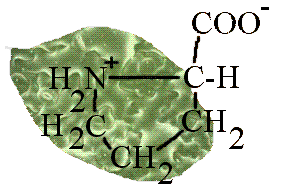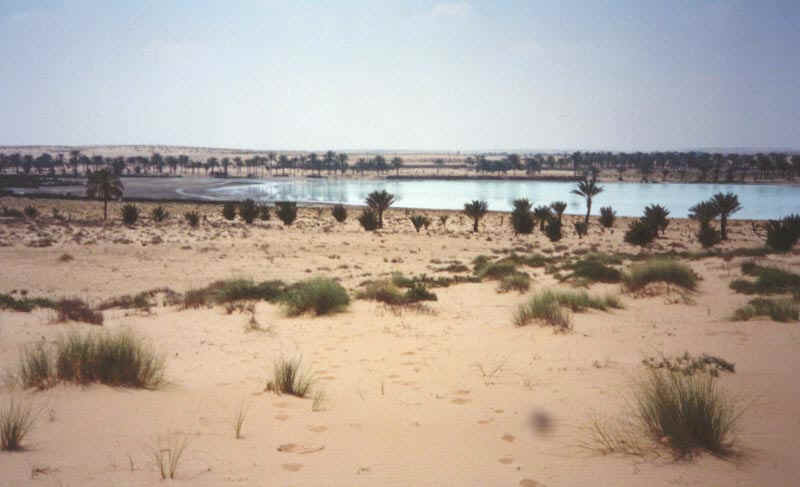
| EFFECTS OF ABIOTIC STRESS
ON PLANTS
Background |
|
| Introduction Background Heavy metal stress |
 Hypersaline lake in an Egyptian desert. Plants grow in both the sandy soil and saline mud. There are habitats throughout the world that present challenges to crop plants through a lack of water and excessive, or toxic, salts in the soil. Although sodium and chloride are the major ions in many soils, and in seawater, other salts such as sulphate and calcium are important in some areas. Problems can be combined, so that drought can be accompanied by a build-up of salinity in soils from irrigation water. Cold stress, although seasonal, has some similarities to a drought, since as water freezes it creates concentrated solutions of solutes. It also subjects the plant to a shortage of liquid water.
The native flora of any region has morphological and physiological adaptations to the stresses they will encounter. Crop plants have been selected by humans for particular characteristics, such as rapid growth and high yields, which can make them perform poorly if subjected to any stress. Interest in the adaptation of plants to environmental stress started at the University of Liverpool in the 1960s with the work of Professor Tony Bradshaw FRS (now Emeritus Professor) on the evolution of tolerance to heavy metals in plants. This was both a practical opportunity to reclaim land damaged during Britain's industrial past, and an opportunity to understand how plants could adapt rapidly to new environmental conditions. The metal-contaminated mine wastes were frequently alkaline and very free-draining. An interest in the response of plants to other abiotic stresses therefore developed, with research extending from whole plant studies through aspects of physiology to molecular biological studies. In addition, there is an active interest in marine plants and algae, and the physiological basis of their very successful marine life styles. |
